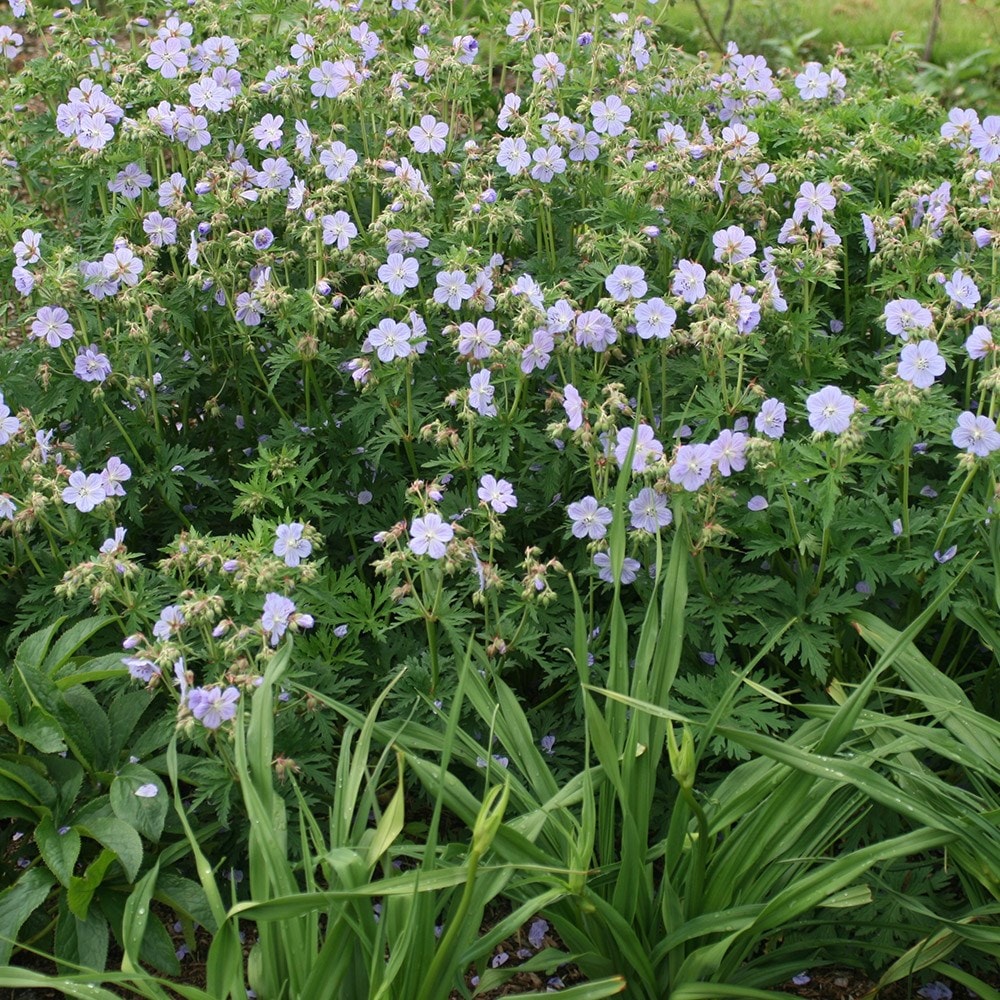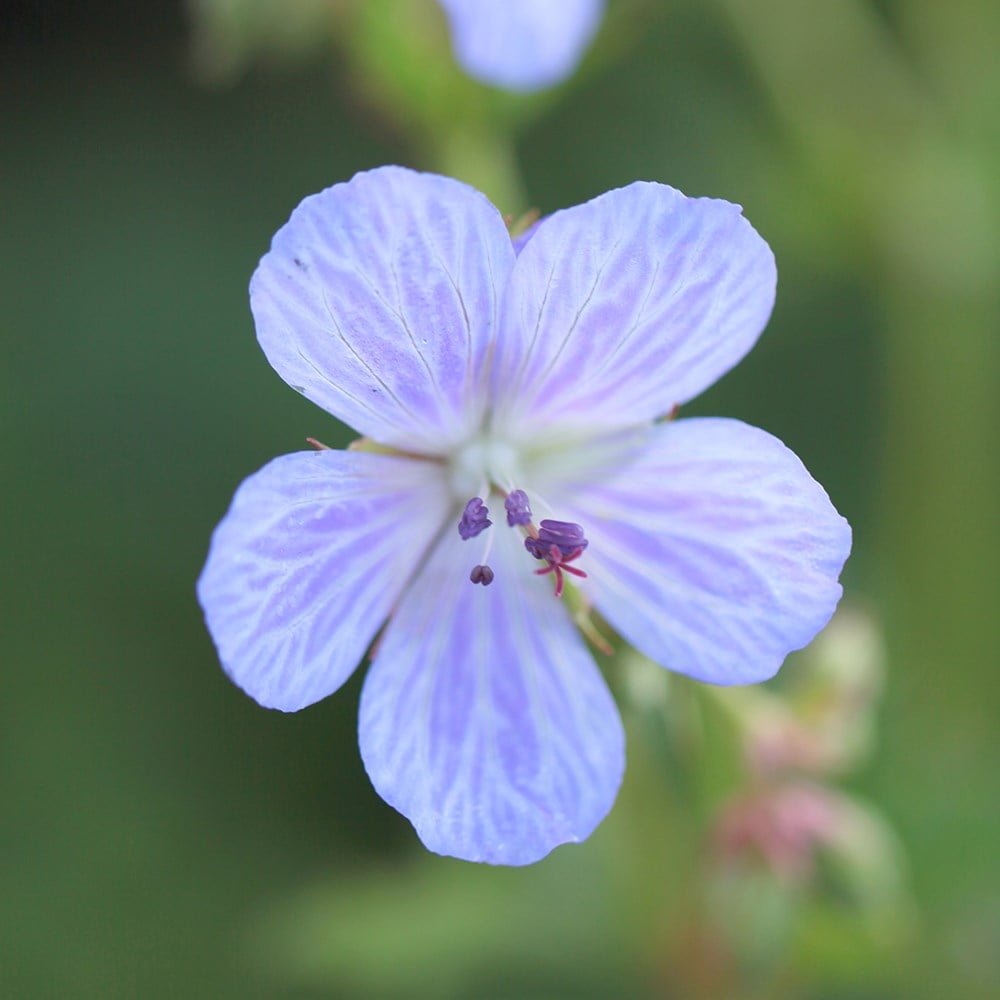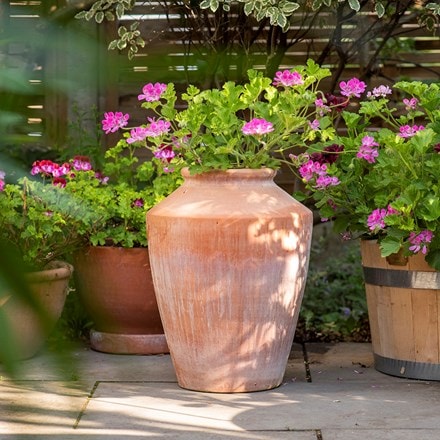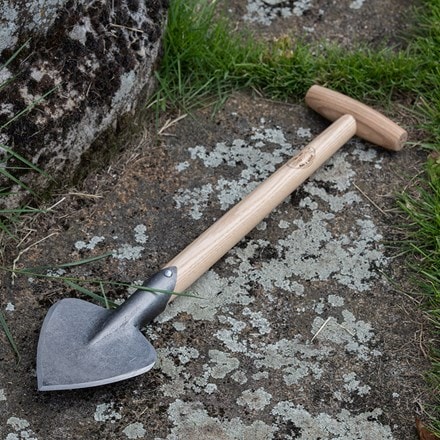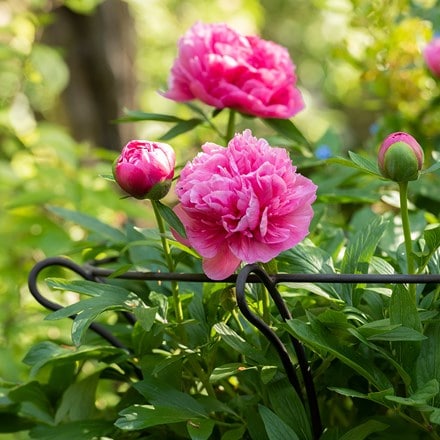Geranium pratense 'Mrs Kendall Clark'
meadow cranesbill
- 9cm pot
- £10.99
- In stock (shipped within 2-3 working days)
- 3 × 9cm pots
- £25.99 £8.66 each
- In stock (shipped within 2-3 working days)
- 6 × 9cm pots
- £44.99 £7.50 each
- In stock (shipped within 2-3 working days)
- 2 litre pot
- £19.99
- available to order from spring
- 3 × 2 litre pots
- £44.99 £15.00 each
- available to order from spring
Delivery options
- Standard £5.99
- Position: full sun or partial shade
- Soil: moderately fertile, moist but well-drained soil
- Rate of growth: fast
- Flowering period: May to June
- Hardiness: fully hardy
This exquisite meadow cranesbill produces its pearl-grey, saucer-shaped flowers in early summer, among finely cut mid-green leaves.
Geranium pratense 'Mrs Kendall Clark' is one of the tallest and most vigorous of the hardy geraniums, and is ideal for the front of a sunny border - although it can also cope with a fairly shady spot.
Attractive to bees and other pollinators, it makes a low-maintenance/high impact addition to wildflower meadows, where it can self-seed freely.
Geranium pratense 'Mrs Kendall Clark' is one of the tallest and most vigorous of the hardy geraniums, and is ideal for the front of a sunny border - although it can also cope with a fairly shady spot.
Attractive to bees and other pollinators, it makes a low-maintenance/high impact addition to wildflower meadows, where it can self-seed freely.
Incorporate plenty of organic matter when planting and water well in dry weather, especially newly established plants. Apply a generous 5-7cm (2-3in) mulch of well-rotted manure or garden compost around the plant to help seal in moisture, feed the soil, and reduce the need for weeding.
Deadhead spent flowers regularly to encourage continuous blooming. If the plant becomes too leggy or untidy later in the season, trim lightly to encourage fresh growth and more flowers.
During the first growing season, regular watering is crucial to establish deep roots. Once established, Geraniums show improved drought tolerance. A feeding of balanced, slow-release fertiliser in spring will support blooming.
At the end of the growing season, cut it back to ground level in late autumn or early spring. Every 3-4 years, consider dividing the plant in spring to maintain its vigour.
Deadhead spent flowers regularly to encourage continuous blooming. If the plant becomes too leggy or untidy later in the season, trim lightly to encourage fresh growth and more flowers.
During the first growing season, regular watering is crucial to establish deep roots. Once established, Geraniums show improved drought tolerance. A feeding of balanced, slow-release fertiliser in spring will support blooming.
At the end of the growing season, cut it back to ground level in late autumn or early spring. Every 3-4 years, consider dividing the plant in spring to maintain its vigour.

